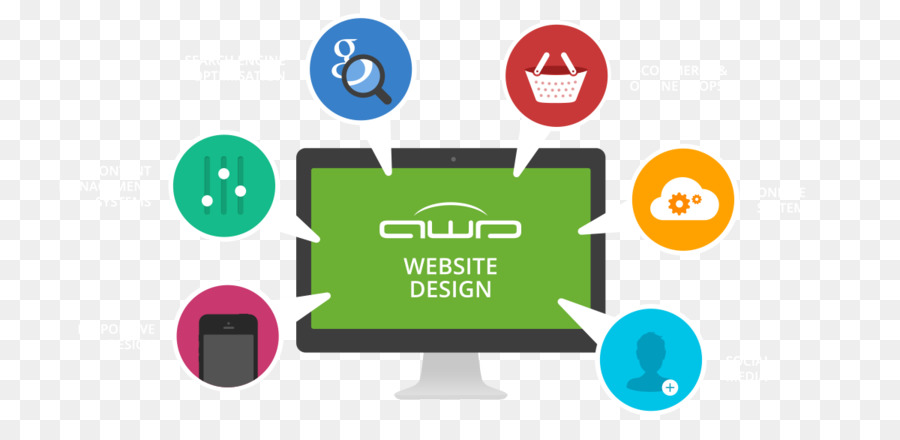Interested In Learning How Internet Site Design Has Evolved? Take A Trip Via The Change
Interested In Learning How Internet Site Design Has Evolved? Take A Trip Via The Change
Blog Article
Personnel Writer-Thorsen Molina
In the past, websites were straightforward and focused on details. Navigating was direct, and layout was for desktops. Now, individual experience is key. Information guides styles for easy navigating. Receptive formats match various devices. Today, dark setting decreases pressure, and minimal food selections enhance navigation. Interactive features involve customers, and vibrant visuals stand apart. AI combination boosts involvement. See just how design has advanced to improve your on the internet journey.
Very Early Days of Website Design
In the early days of website design, simplicity reigned supreme. Internet sites were basic, with minimal colors, font styles, and formats. The emphasis got on supplying information as opposed to flashy visuals. Users accessed the web with slow dial-up links, so rate and performance were key.
Navigating menus were straightforward, generally located at the top or side of the page. Websites were created for desktop computers, as mobile surfing wasn't yet prevalent. Web content was king, and developers focused on very easy readability over complicated layout aspects.
HTML was the primary coding language used, and designers needed to work within its restrictions. Computer animations and interactive attributes were very little contrasted to today's standards. Internet sites were fixed, with little dynamic material or personalized customer experiences.
Surge of User-Focused Style
With the development of internet site style, a shift in the direction of user-focused design concepts has ended up being increasingly famous. Today, creating sites that focus on individual experience is crucial for engaging site visitors and attaining company goals. User-focused design entails comprehending the requirements, preferences, and habits of your target market to tailor the website's layout, material, and features appropriately.
Designers currently conduct thorough research study, such as user surveys and functionality testing, to collect understandings and feedback directly from individuals. This data-driven technique assists in creating intuitive navigation, clear calls-to-action, and aesthetically attractive interfaces that reverberate with site visitors. By putting the individual at the facility of the design procedure, web sites can deliver an extra customized and delightful experience.
Receptive style has likewise become a vital element of user-focused layout, guaranteeing that web sites are enhanced for numerous devices and display sizes. This adaptability boosts ease of access and functionality, accommodating the diverse methods users interact with internet sites today. In essence, the surge of user-focused layout represents a shift towards developing electronic experiences that focus on the demands and assumptions of completion customer.
Modern Trends in Website Design
Explore the current trends forming website design today. https://www.cmswire.com/digital-marketing/6-podcast-marketing-tips-for-better-listener-adoption/ is dark setting design, providing a smooth and contemporary appearance while minimizing eye strain in low-light atmospheres. One more essential fad is minimal navigating, streamlining menus and enhancing user experience by concentrating on essential elements. Integrating micro-interactions, such as computer animated switches or scrolling effects, can develop an extra engaging and interactive website. Receptive design continues to be essential, making certain smooth individual experiences throughout different devices. In addition, making use of strong typography and unbalanced layouts can include visual interest and accentuate particular material.
Incorporating AI technology, like chatbots for client support or individualized referrals, boosts user involvement and enhances processes. Access has also come to be a considerable pattern, with developers focusing on inclusive style techniques to cater to varied individual requirements. Embracing sustainability by optimizing site efficiency for speed and performance is another arising fad in web design. Teaming up with user feedback and data analytics to iterate and improve design continually is essential for staying appropriate in the ever-evolving digital landscape. By accepting these modern-day fads, you can create an aesthetically attractive, straightforward website that resonates with your target market.
Verdict
As you assess the advancement of internet site style from the early days to now, you can see exactly how user-focused style has become the driving force behind contemporary patterns.
Embrace the trip of modification and adjustment in website design, always maintaining the individual experience at the leading edge.
Tippingpointdigital
Stay current with the current trends and innovations, and never ever quit advancing your technique to produce visually magnificent and easy to use websites.
Advance, adjust, and develop - the future of website design is in your hands.
